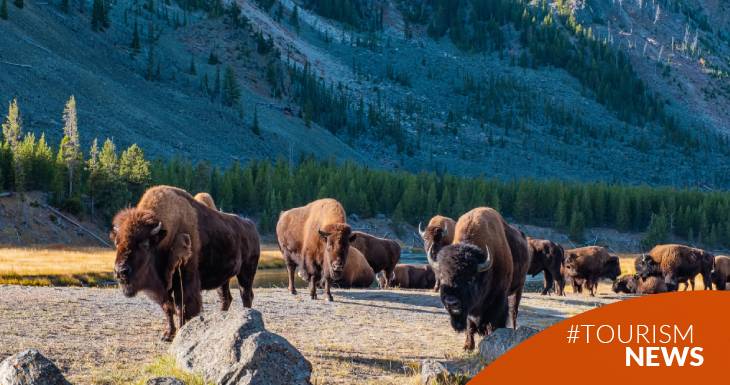The idea of protecting specific natural areas is a practice that dates back to ancient times. However, the notion of national parks as we know them today began to take shape in the 19th century.
The establishment of Yellowstone National Park in the United States marks the birth of the world's first national park. This monumental act laid the groundwork for the concept of conserving natural areas for their aesthetic, recreational and scientific value. It was established on March 1st, 1872, by an act signed by President Ulysses S. Grant and marked the beginning for the natural areas conservation and protection movement that has expanded globally.
During the 19th century, several expeditions explored the region we know today as Yellowstone, and descriptions of its impressive geysers, hot springs, canyons and wildlife attracted the attention of scientists and adventurers. Likewise, works by artists and writers, such as Thomas Moran and Nathaniel P. Langford, played a crucial role in raising public awareness of the beauty and value of this place.
Yellowstone protects a diversity of ecosystems and species, including grizzly bears, wolves, bison, and elk. It is a refuge for wildlife and a natural laboratory for scientific research, providing valuable knowledge about geology, ecology, and conservation. It also attracts millions of visitors each year, contributing significantly to the local and national economy.
National parks are established for multiple purposes:
One of the main ones is the conservation of biodiversity; they serve as a refuge for plant and animal species, some of which are on the verge of extinction. By protecting natural habitats, national parks play a crucial role in maintaining healthy and balanced ecosystems. For example, Kruger National Park in South Africa, which protects important populations of elephants, lions and rhinos, and Galapagos National Park in Ecuador, known for its unique wildlife such as giant tortoises and marine iguanas.
Another purpose of national parks is environmental education. They serve as living laboratories where students and scientists can study ecological and evolutionary processes. These studies can provide crucial data for addressing environmental challenges such as climate change and biodiversity loss. The research conducted in these places contributes significantly to our knowledge of biology, ecology and geology.
National parks also have a strong recreation and tourism component. They offer visitors the opportunity to enjoy nature and participate in outdoor activities such as hiking, bird watching and camping. These experiences foster a deeper appreciation for the environment and a commitment to its protection, as well as promote responsible tourism. They also generate economic income that benefits both local communities and conservation efforts.
Many national parks protect sites of cultural and historical significance, providing a refuge for cultural heritage and ancient traditions. Mesa Verde National Park in the United States preserves ancient indigenous settlements and rock art, offering an important glimpse into past civilizations.
Finally, these parks serve as monitoring stations to assess the impacts of climate change and other long-term environmental threats.
Globally, there are more than 4,000 national parks spread across different countries, which are managed by national governments or private entities in many cases.
The exact number can vary depending on the specific definitions and classifications each country uses to designate protected areas, but the global number continues to grow as more countries recognize the importance of preserving their natural resources.
Australia has the largest number of national parks in the world, with more than 600 spread across its vast territory. These parks protect an incredible diversity of ecosystems, from deserts to rainforests, and are home to a wide range of flora and fauna, many of which are endemic to the region. Australia's large number of national parks reflects the country's commitment to conserving its unique biodiversity and promoting ecotourism.
Every August 24th, the National Parks International Day is celebrated, a date dedicated to recognizing and valuing the importance of these areas that protect critical habitats for a wide range of flora and fauna species, preserve their cultural heritage, offer opportunities for recreation, and also play a crucial role in global tourism.
These natural spaces attract millions of visitors each year - boosting local economies by generating employment and developing sustainable infrastructure - offering unique experiences that connect people with nature and foster respect for the environment.
At QTAssist we celebrate the National Parks International Day, tourist destinations that enrich our lives and protect natural heritage for future generations.


